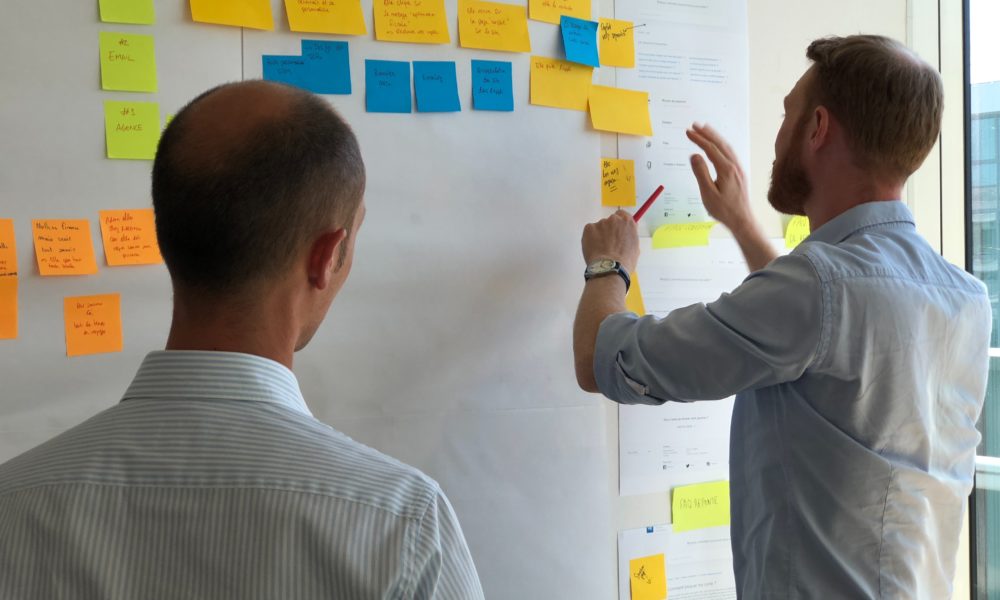Sales Readiness: Commanding Attention and Engagement in the Learning Environment
3.5K Views | 13 Min Read
The business world today is wired for distraction. With a plethora of devices begging for our attention, people are in a constant rhythm of dividing their focus to stay connected.
Think about the last time you were in a meeting. While the presenter walked through slides projected on a monitor, how many times did you use your laptop to catch up on emails, or phone to check social media? Humans are conditioned to crave connectivity, and in the fast-paced business environment, this often manifests as extreme “multitasking.”
While we all think we are great at multitasking, the truth is that we likely are not multitasking at all, but instead just switching our attention back and forth between multiple competing sources. This is called continuous partial attention – and overcoming it is essential for sales enablement practitioners to deliver effective sales readiness initiatives.
Since focus cannot be evenly distributed among multiple things at once, attempting to multitask significantly diminishes the quality of memory. To ensure learning sticks and becomes habit, sales enablement practitioners need to command the full attention of participants and encourage engagement in their sales readiness programs.
How to Grab Attention
To understand how to reel in your learners’ attention, you first need to understand who your learners are and how they are motivated to learn. In any given learning environment, there are three types of learners:
- Goal-oriented learners: Those who want to accomplish clear-cut objectives. They set out to achieve something.
- Activity-oriented learners: Those who want to take part in social experiences. They set out to do something.
- Learning-oriented learners: Those who seek knowledge for its own sake. They set out to learn something.
No one of these types is superior to the other, and in fact, we all might have a different orientation depending on the topic. But effective learning design should seek to appeal to all three by clearly and concisely communicating the what, why, and how from the onset to resonate with what the learners want to get out of the experience.
In terms of methods to communicate these, Elaine Biech explains two tactics in her book, The Art and Science of Training: prior knowledge and novelty.
“Novelty helps the brain initially attend to a stimulus; once the novelty is acknowledged, the brain makes connections so the content can take root,” said Biech. “This tells us that the brain needs to make connections, but it also likes things that are new and unique.”
Consider how you can help increase relevance, respect experience, and demonstrate practicality by drawing in prior knowledge to help learners make connections to the new information they are about to learn. Meanwhile, use novelty – such as a stunt, a fun activity, or props – to boost energy and earn learners’ attention at the very beginning.
“We’re figuring out if there isn’t an ‘aha’ moment within those first two minutes, we’ve lost them,” said Marcela Piñeros, vice president of go-to-market enablement at New Relic. “So, what is that ‘aha’ moment, what is that most critical nugget that they’re going to get and understand, ‘this is going to make my life better, this is going to make my team more effective, this is going to be easier.’”
How to Hold Attention
Once you have learners’ attention, the challenge is to keep it throughout the duration of the learning experience. In Design for How People Learn, Julie Dirksen details four techniques to incorporate in learning design to hold participants’ focus:
Stories
Never underestimate the power of a well-told story. Dating all the way back to the beginning of humankind, stories were the primary way our ancestors passed along information and essential knowledge for survival. Stories help our brain make connections between cause and effect in a logical flow. And when told well, they entertain and create suspense, making the listener want to pay attention to discover the purpose or outcome.
Surprise
There are a couple of ways that surprises can work to your advantage in a learning scenario. First, consider sprinkling in unexpected benefits, such as ending the day early or swapping a written exam for a group discussion. Second, make learners curious, either by challenging a current perception of a concept they might have, asking interesting questions and letting them fill in the gaps on their own, or adding an element of mystery to an activity.
Reward
When it comes to rewarding learners, instructors often default to extrinsic rewards – something unrelated to the experience such as candy or a gift card. While these may seem like positive ways to convince people to participate, they can actually be demotivating, as the emphasis of the activity shifts from the concepts to the rewards. Instead, consider how to introduce intrinsic rewards, things that are genuinely useful to the learner or create a sense of satisfaction. For example, display the best group project in a main part of the office so that others can see their accomplishments.
Social learning
People want to know how other people are doing things and finding success. Leverage subject matter experts and peers to share best practices whenever possible.
“Reps want to hear from a person like them who is in a scenario like them, trying to solve the same problems that they are on a daily basis, who is actually doing really well at managing it,” said Cameron Tanner, sales productivity and readiness at Amazon Web Services. ”I think you can tease out those lessons learned…and you can create communities of learning.”
How to Change Attitudes
Any time people are in a situation where they are learning something new, there are a number of metacognitive roadblocks they can encounter that impact their attitudes about a situation. For example, maybe someone feels overwhelmed by the amount of new ideas, confused how concepts connect, or unsure why they need to change the way they have historically completed a task.
“As human beings, we need to know what it is, why it is happening, how it impacts me, and what I need to do with it,” said Cori Hartje, senior director of sales enablement and technical training at Poly.
To help keep learners engaged in a learning experience, it is important to intervene to avoid potential roadblocks and keep attitudes positive. In the book Telling Ain’t Training, Harold Stolivitch and Erica Keeps introduce five common metacognitive obstacles and measures that can be taken to prepare interventions in the learning design:
- Planning: Learners can become overwhelmed by the idea that all of the concepts introduced in the program are new. To intervene, provide a suggested study schedule and guide of resources so that learners can break up work into more manageable chunks and visibly see what is up next.
- Selecting: With complex topics, learners can struggle to select the most important information to pay attention to and prioritize. Help them target the most impactful concepts by providing cues and explicitly highlighting key information.
- Connecting: It is harder for information to be retained if learners do not understand its relevance to what they already know. Use vivid examples and analogies to build bridges to learners’ prior knowledge.
- Tuning: Learners can often fall back into old habits if subtle distinctions between status quo and new expectations are not clarified. Provide consistent opportunities for practice and share constructive feedback to bring key concepts into clearer focus.
- Monitoring: Some learners might be able to grasp and apply a concept in the classroom, but when it comes to real-life scenarios, they have difficulty recognizing when to use the new skill and instead do what is familiar. Utilize simulations to verify that learners understand both the knowledge and the application.
How to Encourage Engagement
Even with learners’ attention and positive attitudes toward the learning experience, full understanding cannot be reached without participation. That includes participation from the learner, as well as the leaders and managers that are stakeholders in the learner’s success on the job. Biech lists five strategies to encourage engagement from the learners and their support systems before, during, and after a learning experience.
Involve the team before
Prepare supervisors and leaders for what will occur during the learning experience and expected outcomes. Enlist their support with pre-course prep, such as allotting time for learners to read materials or helping them define personal goals for the experience ahead of time. If managers and leaders are enthusiastic and see the value of the experience, that enthusiasm will trickle down to the participants.
Enlist support during
Incorporate realistic practice scenarios whenever possible so that learners can see how the concepts apply to the day-to-day expectations of their job. It is essential to allow practice time within training for participants to have an opportunity to make mistakes, get feedback, and refine skills in a low-risk environment. Consider bringing in leaders, managers, or high-performing peers to assist in giving feedback, simulating scenarios, and debriefing concepts.
“We give [sales reps] a chance to practice and get peer and coach feedback live and in real-time,” said Robert Koehler, director of sales effectiveness at Compass. “A week or two later, we’ll all gather for group debrief to take away the key highlights of what they should continue doing and what as a group they should consider to start or stop doing.”
Provide next steps at the end
When a learning experience concludes, avoid kicking learners out of the nest with no support. For example, have learners buddy up with a mentor to continue to build on their knowledge, provide job aids to reference as needed, ask learners to create action plans to discuss with their manager, or organize peer practice groups.
Follow up after
Keep learners engaged in the concepts beyond the learning experience itself by keeping avenues for discussion open. For example, email resources or related articles to participants, engage them in a Twitter live chat about the topic, facilitate a book club, or create a podcast or newsletter to keep them up to date on the latest trends and build on knowledge over time.
Facilitate support ongoing
Managers will play a critical role in the ongoing application of learning experiences through coaching and mentoring. Help prepare managers for this responsibility by providing coaching frameworks with guiding questions to discuss or behaviors to work on.
Attention is a challenge of any training program that has only become more complicated with technology. After all, knowledge is not acquired through osmosis. If people are not tuned in and engaged, they are not learning.
For any learning experience to be effective, you need to earn the permission of the learner’s brain to accept new information. By using these strategies to grab attention, hold attention, change attitudes, and encourage engagement, you can help ensure that participants in your sales readiness experience extract maximum value that they can use to be successful in their jobs.

















